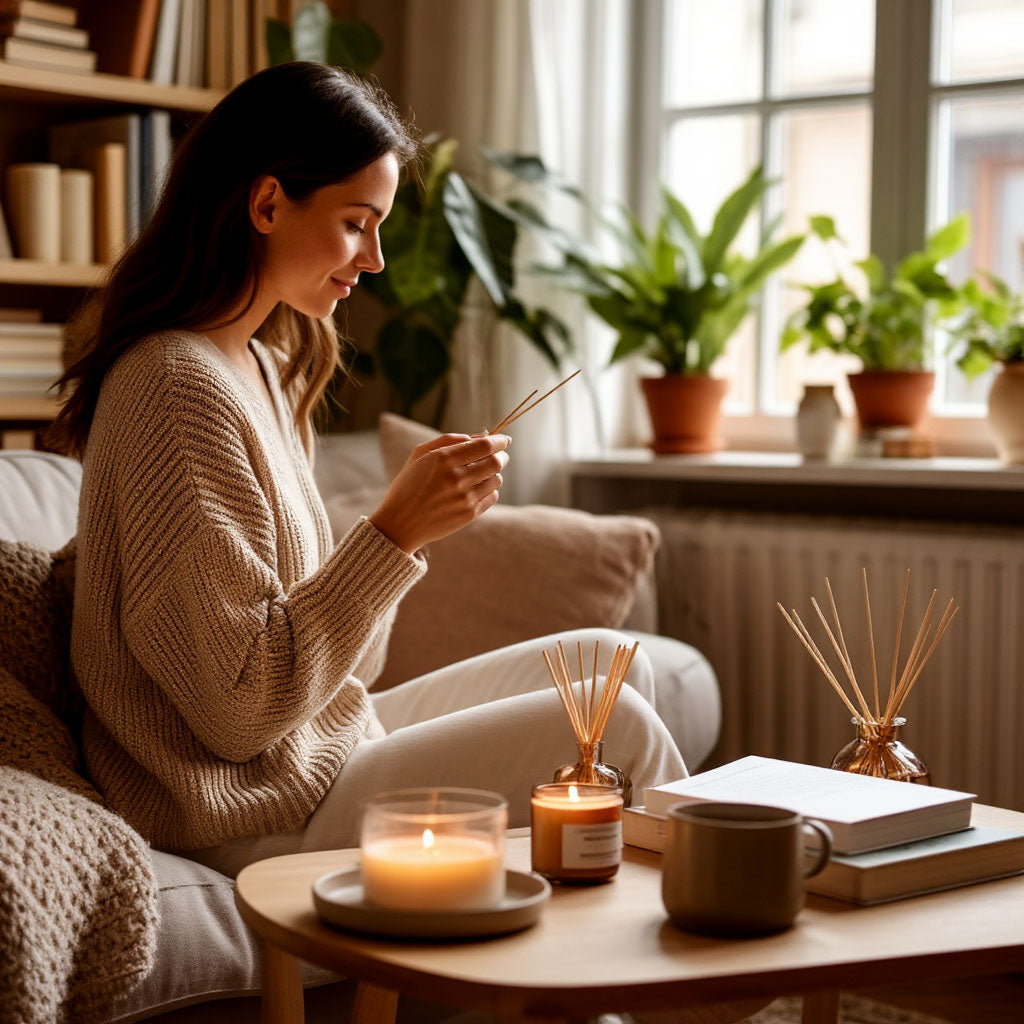
Your Home Should Smell Like You: A Guide to Creating a Unique Scent Identity
Share
Scent is the invisible, yet most powerful, detail of your interior. It is music for the sense of smell that can alter mood, evoke memories, and tell your guests about you without a single word. A home devoid of scent is like a painting without emotion—it can be beautiful, but lifeless.
Having your own unique home fragrance is not a luxury, but a new level of conscious living. It is your personal password to a world of calm, energy, or inspiration. How do you choose it? Forget standard schemes—we are going deeper.
Step 1: Forget "Like/Dislike." Ask: "Who Am I Here?"
A home's scent should reflect not a momentary mood, but the essence of you and the purpose of every corner. Start with an audit of your space and self-perception.
-
For the Entryway: This is your visiting card. It needs a scent that doesn't just freshen, but washes away the hustle and bustle of the street. It should be a calming ritual of transition from the world of chaos to the world of harmony.
-
What to choose: Crystal-clear accords—ocean breeze, damp moss, fresh white lemon, clean linen. They work as an "aromatic gateway."
-
-
For the Living Room: This is the heart of the home, a place for communication and energy. Its scent should be hospitable, complex, and invigorating. It can be a conversation starter.
-
What to choose: Warm, cozy, or social notes—tobacco and patchouli for intellectual conversations, sandalwood and vanilla for family evenings, pomegranate for creating a festive atmosphere.
-
-
For the Kitchen/Dining Room: Taste and appetite reign here. The scent should complement, not overpower, the food. It should evoke a feeling of satiety and satisfaction.
-
What to choose: Sweet, spicy, or "edible" accords—baked apple with cinnamon, vanilla, ginger, coffee. Avoid sharp chemical undertones.
-
-
For the Bedroom and Relaxation Zones: This is a sanctuary of peace. The scent here is your personal therapist. Its task is to quell anxieties, slow down time, and tune you into deep rest.
-
What to choose: Peaceful, powdery, soft perfumes—lavender, ylang-ylang, cedar, heavy florals (rose, jasmine), musk.
-
-
For the Home Office: Here you need a motivator scent. It should clear your head, focus attention, and provide a charge of creative energy.
-
What to choose: Invigorating, woody, green notes—lemon, bergamot, rosemary, ginger, smoked wood.
-
Step 2: Listen to the Language of Scents—Read the "Fragrance Pyramid"
As in perfumery, home fragrances have three levels of expression (notes) that unfold over time.
-
Top Notes (The First Impression): This is what you feel immediately after unboxing or lighting a candle. They are volatile and bright: citrus, greenery, light spices. They invigorate and attract attention.
-
Heart Notes (The Core Character): They unfold after 15-20 minutes and form the heart of the fragrance. These are usually flowers, fruits, herbs. They determine the mood of the scent—whether it will be romantic, juicy, or fresh.
-
Base Notes (The Foundation and Trail): They stay with you for a long time; this is the foundation. These are woody accords (sandalwood, cedar), vanilla, musk, amber, patchouli. They are responsible for the depth, warmth, and that very "enveloping" aura.
Your task: Find a fragrance where you like not only the first bright note but also the deep, warm trail that will linger in the room for several hours.
Step 3: Create Your Unique Palette—The 70/20/10 Rule
Here is the main secret of a truly unique fragrant home: don't stick to just one scent.
Imagine you are a perfumer, and your home is a complex, multi-layered perfume.
-
70% — your base, signature scent. This is the main theme that plays in the main areas (living room, hallway). It should be the one dearest to you and of the highest quality. For example, luxurious sandalwood.
-
20% — companion scents. They complement the main one, adding depth or contrast. For example, in the bedroom, you can add vanilla to sandalwood for softness. In the kitchen—ginger for vigor.
-
10% — seasonal or mood accents. Change them to refresh the sensations. In winter—cinnamon and orange, in summer—mint or cucumber, for a party—champagne or pomegranate.
This combination will create an inimitable cocktail that will be unique to your space. Guests will never be able to say, "Oh, it's just vanilla." They will say, "Your home smells incredible!".
Step 4: Invest in Quality, Not Fleetingness
Creating a scent identity is a marathon, not a sprint. Cheap, alcohol-based air fresheners often smell synthetic and aggressive; they "hit" the nose and evaporate quickly, leaving no trail.
Choose formats that work on a constant basis and unfold gradually:
-
Reed Diffusers: Ideal for background, subtle sounding 24/7. They quietly and confidently fill the room with fragrance, requiring no flame.
-
Natural Wax Candles (soy, coconut): Create the most complete, voluminous, and emotional sound. Ideal for evening rituals and creating an intense mood.
-
Aroma Stones and Sachets: A local solution for closets, dressers, and drawers. They provide a pleasant surprise when you least expect it.
Conclusion: A Home That Has a Scent is a Home That is Alive
Your scent profile is as much a part of the design as the color of the walls or the textiles. It is a manifestation of your care for yourself and those who come to visit you. It is an invisible but tangible aura that says, "You have come to my space, to my world."
Don't look for one "perfect" scent. Experiment, mix, listen to your feelings. Create a score where the scents of the living room, kitchen, and bedroom sound in unison. And one day, returning from a long trip, you will open the door and sigh with relief: you are home. And that smell is the most welcome drink imaginable.